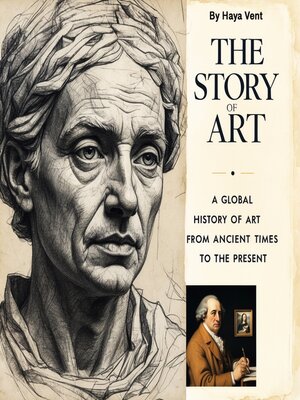The Story of Art
audiobook (Unabridged) ∣ A Global History of Art from Ancient Times to the Present
By Haya Vent

Sign up to save your library
With an OverDrive account, you can save your favorite libraries for at-a-glance information about availability. Find out more about OverDrive accounts.
Find this title in Libby, the library reading app by OverDrive.



Search for a digital library with this title
Title found at these libraries:
| Library Name | Distance |
|---|---|
| Loading... |
The origins of art trace back to the earliest days of human civilization, when prehistoric people first began expressing themselves through visual forms. Long before written language, art served as a means of communication, storytelling, and spiritual connection. Some of the earliest known examples of artistic expression include cave paintings, carvings, and small figurines, which offer insight into the beliefs, rituals, and daily lives of ancient peoples.
One of the most famous sites of prehistoric art is the Lascaux Caves in France, where vivid depictions of animals—bison, deer, and horses—adorn the walls. These paintings, dating back nearly 17,000 years, demonstrate a remarkable understanding of form, movement, and composition. While the exact purpose of these images remains unknown, many scholars believe they were tied to hunting rituals or early religious practices. Similarly, the Venus figurines, small carved statues of women found across Europe, suggest a deep reverence for fertility and life-giving forces. These early works highlight how art was intertwined with survival, spirituality, and social structure.
As early civilizations emerged, art became more structured and symbolic. The ancient cultures of Mesopotamia, Egypt, and the Indus Valley developed artistic traditions that reflected their political, religious, and societal values. In Mesopotamia, cylinder seals and relief carvings depicted rulers and deities, reinforcing the divine authority of kings. Egyptian art, characterized by rigid, formulaic depictions of gods and pharaohs, served to maintain cosmic order and secure the afterlife. Monumental structures, such as the pyramids and the Sphinx, not only showcased architectural ingenuity but also conveyed messages of power and eternity.






